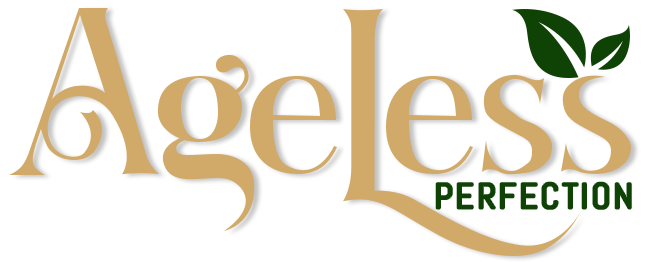By Dr. Jenkins Clarkson | Physician-led care at Ageless Perfection Medical Aesthetics, Powell, WY
If you were sitting in my treatment room right now—maybe a little wind-tossed from the parking lot—and said, “Doc, my jaw looks bulky in photos. Can anything be done to slim it without surgery?” I’d nod and say: yes, there’s a thoughtful, safe, doctor-performed way to soften a squared or heavy jawline. It starts with understanding a pair of hard-working muscles called the masseters and how Dysport can relax them just enough to reshape the lower face and often soothe jaw clenching at the same time.
This isn’t about chasing trends. It’s about comfort, function, and a balanced profile that feels like you.
Why the Jaw Can Look Squared or Too Full
A strong, angular jaw can be a beautiful feature. But if your lower face feels boxy, wide, or tense, the reason is often hypertrophy (growth) of the masseter muscles—the thick muscles at the angle of the jaw you can feel when you clench your teeth. They help you chew, but they also tighten when you grind at night, clench with stress, or spend hours concentrating.
Over time—especially during stressful seasons (hello, holidays)—those muscles can bulk up, much like a bicep grows with repeated curls. The result: a wider lower face, a square contour in photos, morning headaches, tooth wear, and a jaw that feels tired or achy by late afternoon.
How Dysport Slims the Jaw (and Helps TMJ-Type Symptoms)
Dysport is a neuromodulator in the same family as Botox. In small, precise doses, it relaxes the masseter muscles, reducing their overactivity. Think of it as turning down the volume rather than muting the sound. You still chew and smile normally; you’re simply not over-recruiting those muscles all day and all night.
What happens next?
- Gradual slimming: As the muscle relaxes, it de-bulks, softening the jaw’s width. This process is subtle and natural, unfolding over 6–8 weeks, with peak effect around 12 weeks.
- TMJ relief benefits: Many people notice fewer morning headaches, less clenching, reduced soreness around the jaw, and sometimes improved sleep quality.
- No “frozen” look: Dysport does not change your expressions in the lower face when placed correctly. Precision matters here; this is doctor work, not a one-size-fits-all menu item.
At Ageless Perfection, I personally perform every injection. Lower-face work requires years of anatomical experience because tiny placement changes can have outsized effects.
What Results Look Like—and When You’ll See Them
You’ll likely feel the functional benefits (less clenching fatigue) first—often within 7–10 days. Visible contour changes build more slowly:
- Week 1–2: Jaw tension begins to ease.
- Week 3–4: Early softening of the angle of the jaw in profile photos.
- Week 6–8: Clearer slimming effect; face looks a bit less “boxy.”
- Week 12: Peak reshaping. This is when most patients say, “Oh wow—I see it now.”
Results typically last 3–5 months for function, with a contour benefit that often lingers longer when treatments are repeated on a cadence. Many patients choose two to three sessions a year to maintain both comfort and shape. Think of it like trimming a hedge: consistent, gentle care keeps the line clean without drastic cuts.
How Many Units Do I Need?
This varies with anatomy, goals, and muscle strength. In general:
- Smaller, first-time jaws may need a conservative dose on each side.
- Stronger masseters (frequent grinders, athletic bite) may need a higher dose or a staged approach—starting conservative, reassessing at 6–8 weeks, and layering if needed.
I don’t “chase” numbers. I map your muscles and choose a plan that balances comfort, shape, and safety.
Holiday Timing: Planning Around Photos & Events
If you want a sleeker lower face for holiday photos, aim your first session 6–8 weeks before the big event. You’ll likely feel relief from clenching within two weeks and begin seeing visible shaping by the time you’re picking out outfits. If you’ve missed that window, don’t worry—functional benefits still matter, and we can plan your follow-up for the next milestone (Valentine’s, graduations, summer reunions).
Safety, Technique, and What I Do Differently
Masseter injections are safe when done by a skilled, experienced physician. The lower face is complex—smile symmetry, chewing, and speech all run through this neighborhood—so expert hands matter.
Here’s my approach:
- Anatomy-first mapping: I palpate the muscle at rest and clenched, mark fibers, and avoid areas that influence your smile.
- Conservative dosing: I’d rather under-treat at the first session and step up slowly than over-relax your bite. We’re aiming for “ahh, that feels better,” not “my steak feels strange.”
- Follow-up at 2–3 weeks: I like to see how you’re responding. We can add a little if needed.
- Long-term plan: If your goal is both comfort and contour, we map a gentle, sustainable cadence for maintenance.
Common side effects are mild and temporary: a little soreness where we pressed, a small bruise, or transient chewing fatigue for a few days. Severe side effects are rare with careful technique.
Dysport vs Botox for Jaw Slimming: Which Is Better?
Both are excellent tools. Some patients report Dysport feels a touch quicker to start and a bit more diffusive, which can be helpful for a broad, thick masseter. Others do beautifully with Botox. I’ve used both and select based on your anatomy and preferences. The “right” choice is the one that gives even relaxation across the muscle belly without affecting nearby smile muscles.
Can Jaw Slimming Help My TMJ?
If your “TMJ” symptoms are related to muscle overactivity—morning jaw soreness, tension headaches, chipped or worn teeth—then yes, relaxing the masseters often helps. If your issues stem from joint problems (the disc inside the joint or structural changes), Dysport won’t fix the joint, but it may reduce the muscle clenching that’s aggravating it. Many patients also work with their dentist on night guards while we manage the muscular side.
What About Chewing and Speech?
You can and should chew normally. The goal is to reduce excess clenching force, not disable the muscle. For the first few days, a softer diet can feel more comfortable—think chili, stews, or scrambled eggs—then resume your usual meals. Speech isn’t affected when we inject correctly. I test your smile symmetry during the visit to confirm we’re in the right neighborhood.
Will My Face Sag if the Muscle Shrinks?
No. The masseter sits under the cheek fat pads. As it relaxes, the face often looks more balanced, not looser. If you already have skin laxity, we can pair Dysport with skin-tightening and resurfacing:
- OPUS Plasma to refine texture and subtly tighten
- Microneedling to boost collagen (think of it like aerating your lawn)
- Alastin Regenerating Skin Nectar and Restorative Skin Complex to support collagen remodeling and maintain results
These pairings let us soften the jaw while keeping the skin firm and bright.
Pairing With Other Treatments for a Sleeker Look
Jaw slimming shines brightest when it’s part of a balanced plan. Depending on your features and goals, we might combine:
- Masseter Dysport for width and clenching comfort
- Chin filler to subtly lengthen or project the chin, improving facial proportions
- Jawline filler (conservative) to define the border once masseter bulk softens
- OPUS Plasma or microneedling for texture and pore refinement
- IV therapy for hydration support during big event seasons
The goal is not to “do more.” It’s to do what matters, in the right order, so each step amplifies the next.
A Few Myths—Debunked
Myth 1: “I’ll look gaunt.”
With conservative dosing and follow-up, you won’t. The result should look rested, not hollow.
Myth 2: “Chewing will be hard.”
You can chew. Some people choose softer foods for a couple of days while things settle.
Myth 3: “It’s obvious and everyone will notice.”
Most people simply notice you look less tense and more balanced. It’s you—just eased.
Myth 4: “It fixes everything TMJ.”
It helps muscle-driven symptoms. Joint issues still need dental/medical evaluation.
What a Typical Appointment Looks Like
- Consultation: We talk through your goals, symptoms (clenching, headaches), and history. I examine your bite patterns and facial balance.
- Mapping & Photos: Quick documentation so we can track progress.
- Injection: Tiny, targeted placements in each masseter. Most say it feels like a quick series of little pinches.
- Immediate Aftercare: No massage. Avoid heavy workouts and dental procedures that day. You can return to daily life right away.
- Follow-up: I like to check you at 2–3 weeks—a quick visit to assess response, symmetry, and comfort.
Who’s a Good Candidate?
You might be a strong candidate if you:
- See a wide or squared lower face on photos or video
- Wake with jaw tightness, headaches, or tooth sensitivity
- Have visible clenching during the day (jawline flexes when stressed)
- Want a non-surgical approach with gradual, natural change
- Can commit to a maintenance cadence (2–3 times per year) if you love the results
We’ll avoid or delay treatment if you’re pregnant or breastfeeding, have certain neuromuscular conditions, or have a current infection in the area.
“I’m Nervous. What If I Don’t Like It?”
Two things. First, your feelings are valid. Second, my approach is measured and reversible with time. Dysport gradually wears off; we’re not making permanent changes in one visit. We start conservative, which allows you to evaluate comfort and contour without overshooting. I’ll walk with you the entire way—because that’s what physician-led care is supposed to be.
What It Costs—and Why Technique Matters
Pricing depends on dose and your unique anatomy. While Dysport is often cost-efficient for larger muscles, I don’t make plans around “unit deals.” I make plans around your face and function. A careful map, precise placement, and a follow-up are worth more than chasing a bargain that cuts corners. Safety and long-term, natural results beat quick fixes.
At-Home Habits That Help
- Night guard (if your dentist recommends one) to protect teeth
- Stress strategies: breath work, stretching, or a quick evening walk
- Magnesium at bedtime (if appropriate for you; we’ll discuss)
- Jaw awareness: notice daytime clenching and gently release tongue from roof of mouth
Think of Dysport as the anchor and these habits as the supporting cast.
What Patients Often Say After
- “I didn’t know my jaw could feel this”
- “My face looks softer in photos, but no one can tell what changed.”
- “My morning headaches are better.”
- “Chewing feels normal. I just don’t crunch down as hard.”
Those are the outcomes we’re aiming for—functional ease and balanced contour, without trading away expression or comfort.
Why Work With Me
Every treatment in this clinic is performed by me—a physician who’s spent years listening, examining, and treating. This isn’t a chain or a rotating-provider model. It’s doctor-led care in a small-town setting, with the time and attention your face deserves. You’re not just getting a service; you’re getting experience, judgment, and a honest guide who will tell you when to add—and when to wait.
Let’s Talk About What’s Right for You
If holiday stress has your jaw working overtime—or you’d simply like a softer, less boxy lower face—Dysport masseter treatment can be a thoughtful next step. We’ll talk about your goals, map your muscles, and set a conservative plan that favors safety and natural results.
There’s no pressure here. Just a conversation about what fits your face, your comfort, and your season of life.
Let’s talk about what’s right for you.
📍 Ageless Perfection Medical Aesthetics | Powell, WY
📞 (307) 228-9002
🌐 agelessperfectionwy.com

